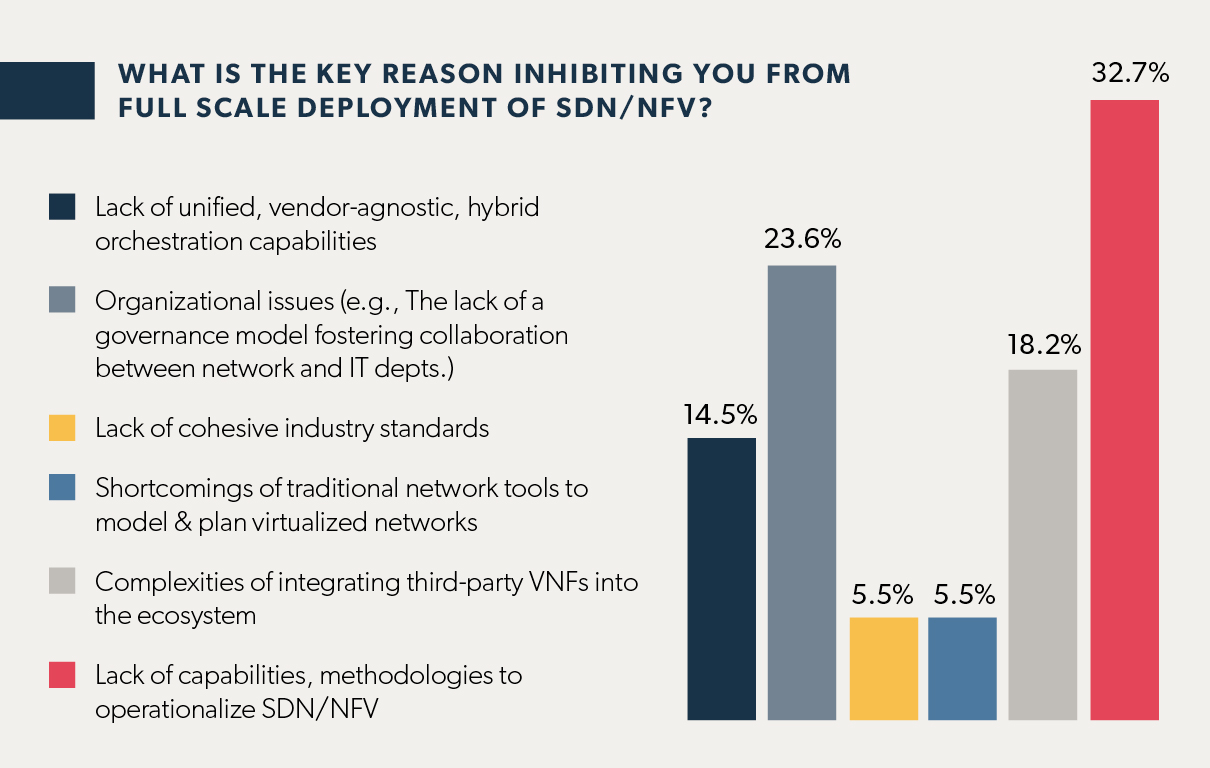Top 5 Necessities to Make the Most of SDN/NFV
With the right tools and methodologies, service providers can bring to light the opportunities presented by SDN and NFV.
When we look at the promise of software-defined networking (SDN) and network functions virtualization (NFV) and compare it to the reality of service providers’ networks and operations today, the gap between the two can look like an unpassable chasm. Despite the fact that most service providers are pursuing virtualization, they are still a long way from implementing full-scale SDN and NFV initiatives.
Delving into the topic of bringing virtualization programs into reality, we recently hosted webinar with Light Reading called “Virtualization at Scale: How to Operationalize and Commercialize.” During the webinar, we asked the audience about the key inhibitors preventing them from deploying SDN/NFV at scale. The most common reason among respondents was the lack of capabilities and methodologies that are required to operationalize SDN/NFV.

It’s not a surprising result; we have repeatedly heard from service providers that they are struggling to roll out virtualization at scale and they believe technology shortcomings, lack of operationalization skills, lack of integration and business-case challenges are still major barriers to commercializing SDN and NFV. Generally speaking, the technologies within traditional physical networks are not yielding optimal results for service providers when it comes to managing hybrid networks. While there have been many trials and proofs of concept that focus on upgrading networks with the help of virtualization, few have focused on how to deploy these technologies at scale or how to use them to generate revenue.
Barriers to virtualization often stem from legacy systems, outdated processes or misaligned organizational structures that do not support software-based networks and services. Service providers must realize that SDN and NFV won’t have a realistic impact on their businesses until their infrastructure can support on-demand services and hybrid networks. This requires changes to their business at a foundational level.
What Should Be the Focus?
In order to reap the full benefits of SDN and NFV, services providers need to move forward with five critical projects:
1. Enable simple VNF onboarding and license management.
Service providers need an app-store approach to SDN and NFV that makes onboarding virtual network functions (VNFs) as easy as downloading and installing an app.
2. Implement a comprehensive partner management program.
Service providers work with a plethora of partners, which means these relationships need automated, efficient onboarding, agreement management and reliability tracking capabilities.
3. Deploy self-service and cloud-ready marketplaces.
Service providers need to be able to publish services in digital marketplaces that allow customers to order those services easily.
4. Enable real-time transaction management.
Service providers must be able to monetize virtualized offerings without having to overhaul their business systems.
5. Use a virtualization-ready catalog.
Because digital services bundle underlying resources from both physical and virtual network functions, a provider's service catalog must be able to handle any type of network function.
NEC/Netcracker designed the Agile Virtualization Platform and Practice (AVP) with these capabilities in mind in order to accelerate the commercialization of SDN and NFV. For more on what it takes to ramp up virtualization to scale, please watch the webinar on Light Reading.